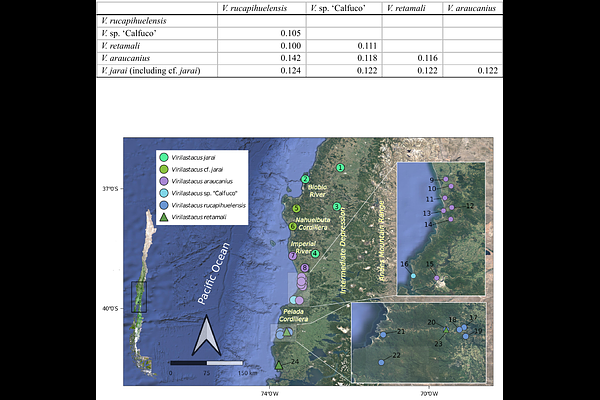Single-locus species delimitation and a new phylogeny for the genus Virilastacus

Single-locus species delimitation and a new phylogeny for the genus Virilastacus
Amador, L.; Victoriano, P.; Escobar, C. M.; D'Elia, G.
AbstractSouth American crayfish of the family Parastacidae inhabit freshwater systems in northern Argentina, southeastern Brazil, central and southern Chile, and Uruguay. The Chilean endemic genus Virilastacus, one of the three South American genera, currently comprises four species distributed across southern Chile. However, the genetic variation and population distribution of Virilastacus remain poorly understood, and species delimitation has made limited use of genetic data. In this study, we analyzed mitochondrial DNA sequences to investigate the genetic and geographic species boundaries of Virilastacus from a molecular perspective. Divergence time estimates indicate that the stem age of Virilastacus is ancient, with the radiation of extant species beginning in the Middle Oligocene. Single-locus species delimitation analyses support five species: the four currently recognized species and a candidate species identified in this study (V. sp. Calfuco). The taxonomic distinction of this candidate species should be further evaluated using additional evidence. Furthermore, our findings suggest an expanded range for V. jarai and a reduced distribution for V. araucanius. Finally, we discuss the broad geographic patterns of genetic diversity in Virilastacus in the context of orographic and paleoclimatic factors.